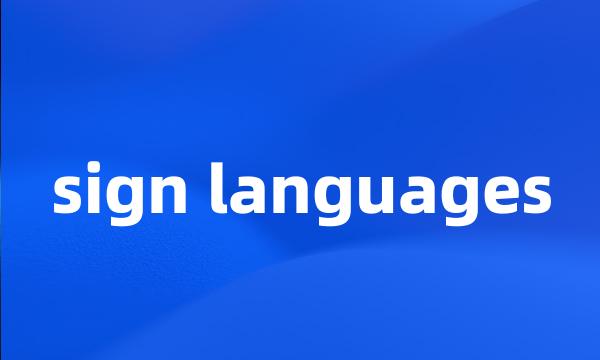sign languages
- n.手势语
- sign language的复数
 sign languages
sign languagessign languages
-
1
N-VAR (聋哑人或使用不同语言的人交流时使用的)手语,手势语
Sign language is movements of your hands and arms used to communicate. There are several official systems of sign language, used for example by deaf people. Movements are also sometimes invented by people when they want to communicate with someone who does not speak the same language.Her son used sign language to tell her what happened.
她儿子用手语告诉她发生了什么事。
-
Some sign languages are very sophisticated means of communication .
有些手语可以表达非常复杂的内容。
-
Sign languages can be used in different manner .
手语的运用有不同的方式。
-
In 2005 , people commemorated Braille and sign languages .
2005年,人们庆祝了盲文和手语。
-
Study of sign languages is a recent phenomenon , and as a result relatively little information is available to the general reader about these languages .
毕竟手语研究是一种新兴事物,所以能够向普通读者提供的相关手语研究信息很少。
-
Persons with disabilities shall be entitled , on an equal basis with others , to recognition and support of their specific cultural and linguistic identity , including sign languages and deaf culture .
残疾人应享有平等的基础上,与他人一起,得到承认和支持他们的特定的文化和语言特性,包括手语和聋人文化。
-
Content : Intercourse is that the people use sign language or languages to exchange views and convey ideas , express their feelings and needs , such as the exchange process , including material and spiritual exchanges .
交往指人们运用语言或非语言符号交换意见、传达思想、表达感情和需要等交流过程,包括物质交往和精神交往。
